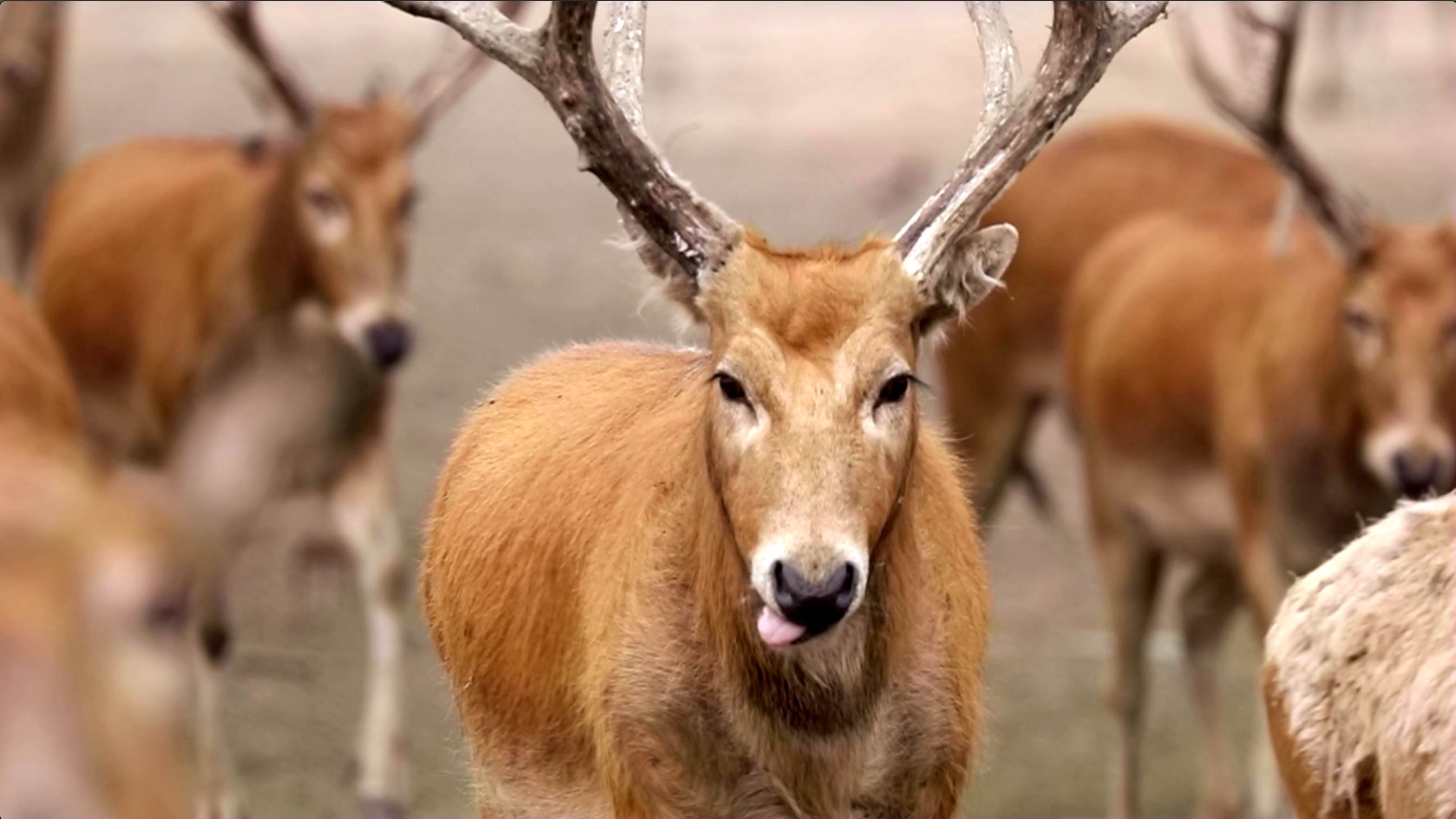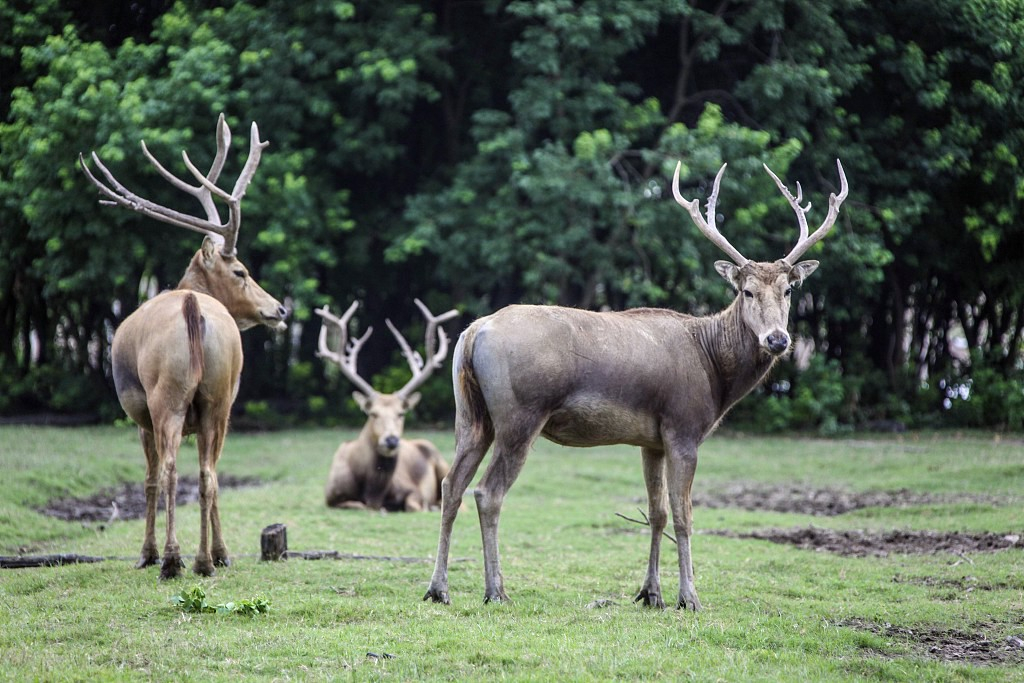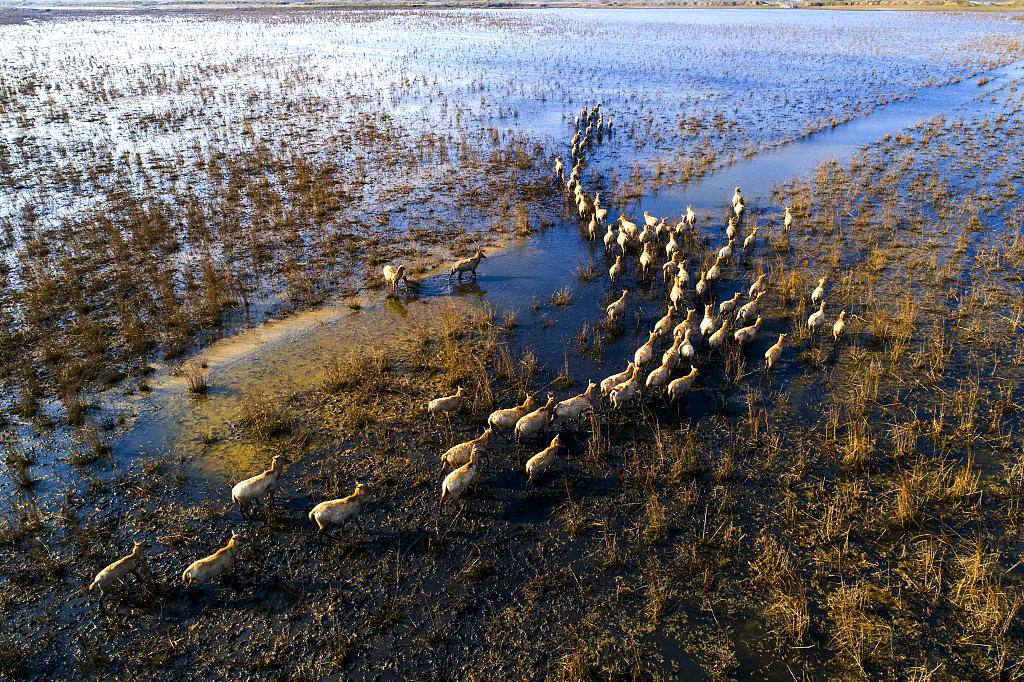
Animal
15:02, 22-May-2019
Why can milu deer thrive in the wild despite mating with cousins?
By Zhao Ying

When Armand David, a French missionary and biologist saw an unfamiliar deer in Beijing in 1865, he was fascinated by a creature that had not been described before.
The deer is nicknamed “sibuxiang” by locals, meaning like none of the four, because it has the antlers of a deer, the head of a horse, the tail of a donkey and the hooves of a cow. Later, this deer was made known to the Western world by the name of Père David's deer or milu.
In 1900, the milu deer went extinct in its native land China due to flooding and constant wars. The remaining 18 milu deer collected by the 11th Duke of Bedford and placed in Woburn Abbey in England are the ancestors of all milu deer living today.

Three milu deer at Dafeng Milu Deer National Nature Reserve in east China's Jiangsu Province. /VCG Photo
Three milu deer at Dafeng Milu Deer National Nature Reserve in east China's Jiangsu Province. /VCG Photo
For wild animals, inbreeding might cause genetic disease and decrease their ability to adapt. To avoid doing so, some wild animals like lions would be expelled by their parents from home once they have basic survival skills.
Surprisingly, the milu deer didn't show apparent symptoms of degradation after mating with their cousins. Not only has its global population increased from only 18 to over 8,000, but its number living in the wild also reached 1,000, according to Zhong Zhenyu, a researcher at Beijing Milu Ecological Experiment Center.
Scientists are probing the secret behind milu deer's miraculous recovery. One theory is that the last 18 milu deer have the best genes. During their breeding in Woburn Abbey, the milu deer were sent to other places once its population reached 250. People kept eliminating inferior ones in terms of size, temper, and fertility, which ensured their quality.

A herd of milu deer is foraging in the Yellow Sea Wetlands. /VCG Photo
A herd of milu deer is foraging in the Yellow Sea Wetlands. /VCG Photo
The other theory suggests that the fierce competition among the stags during the mating season made sure only the strongest can pass on its genes to the future generation.
Apart from the above, a suitable environment is also crucial for their survival in the wild. Currently, the wild milu deer only exist in China. Given that the milu deer historically inhabited the marshland area along the Yangtze and Yellow rivers in China, they can adapt to the local climate and plants here. Besides, with the protection of wetlands in recent years, the wild milu deer in east China's Jiangsu Province has bred the sixth generation, which demonstrates their capacity to live in the wild.
(Cover image by CGTN, shot in Beijing Nanhaizi Milu Park, China)
(If you want to contribute and have specific expertise, please contact us at nature@cgtn.com)

SITEMAP
Copyright © 2018 CGTN. Beijing ICP prepared NO.16065310-3
Copyright © 2018 CGTN. Beijing ICP prepared NO.16065310-3